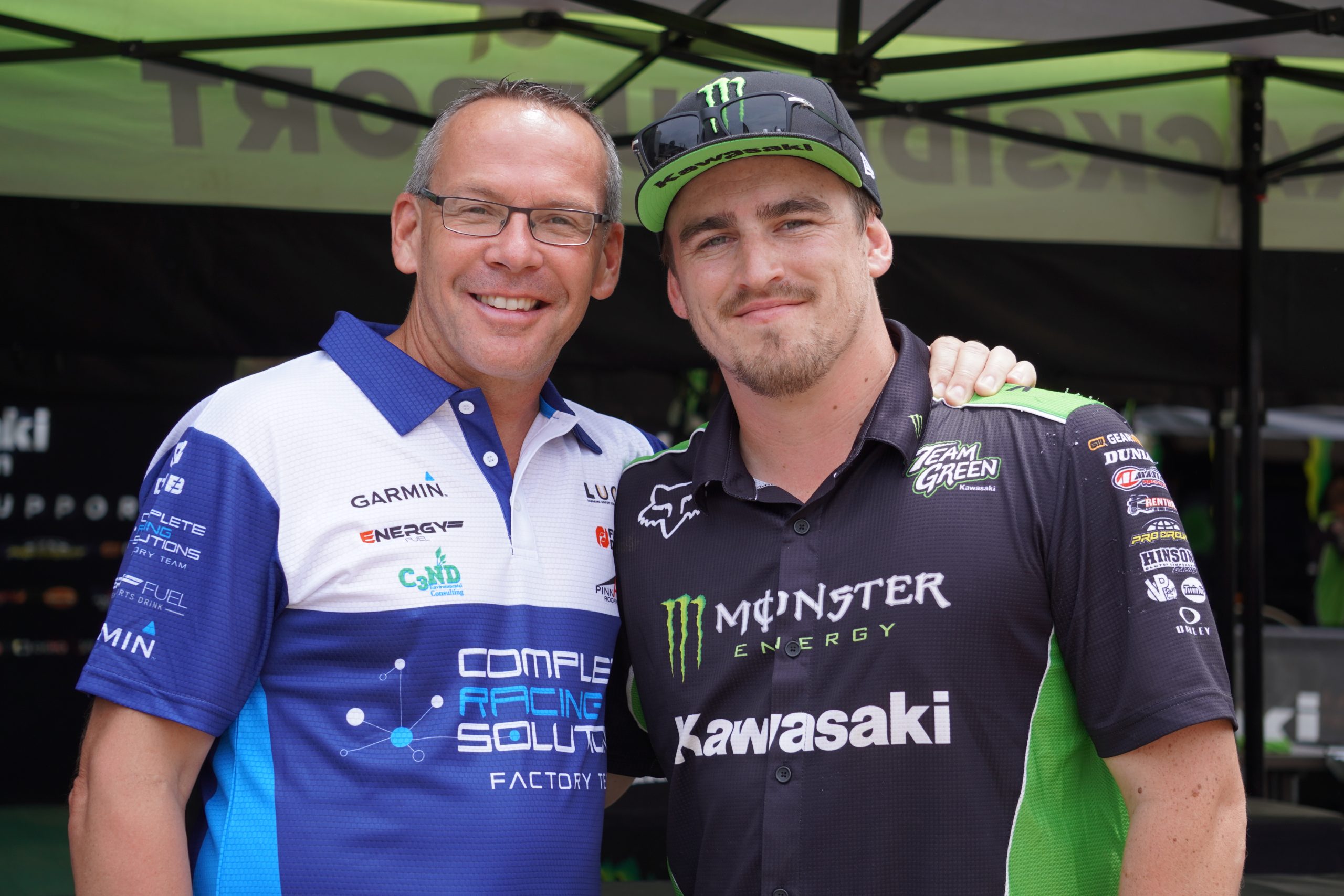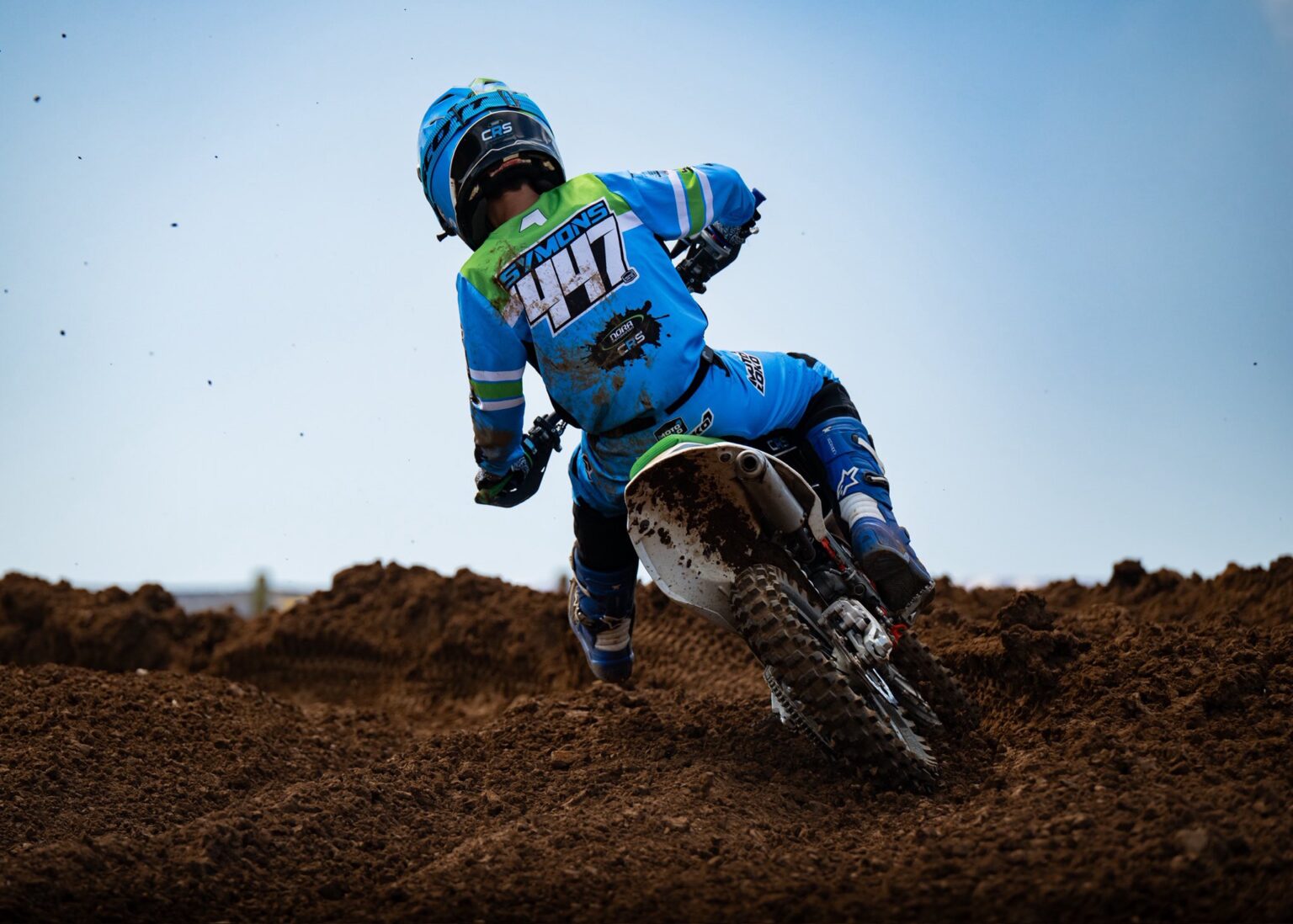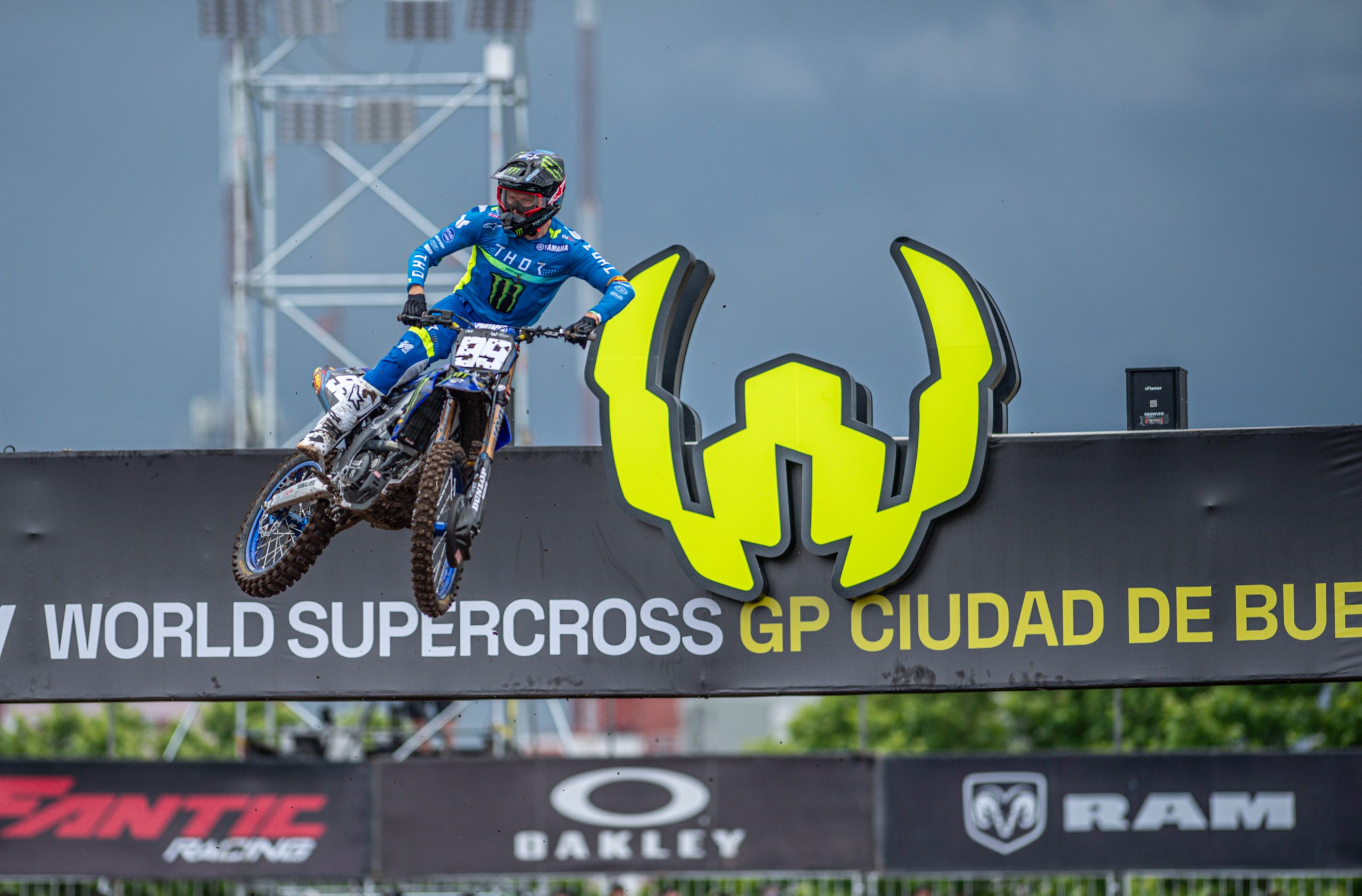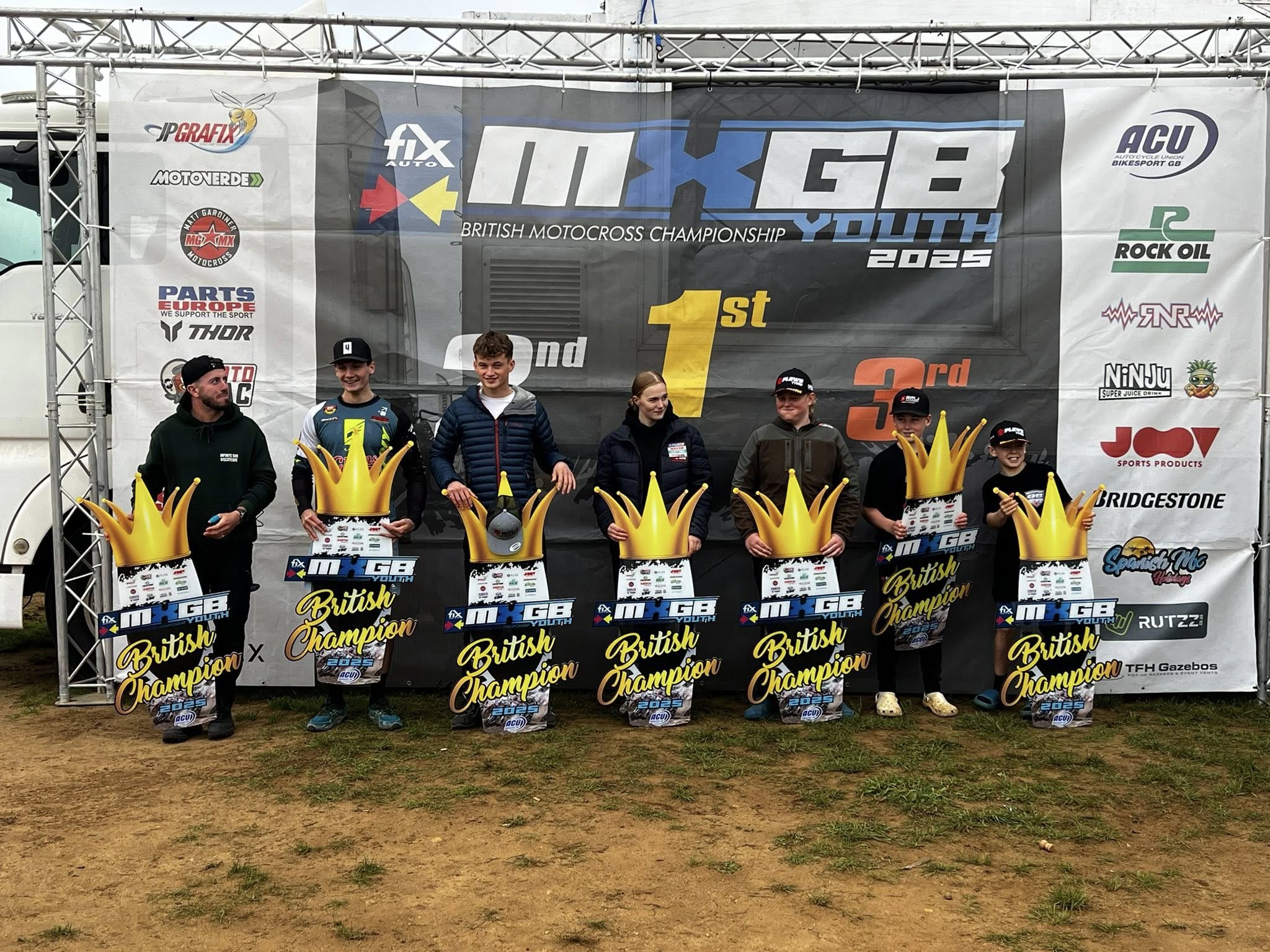For those who aren’t aware of the CRS of the NORA CRS Development Team. CRS is Coach Robb Beams of Complete Racing Solutions and we thought we would get five minutes of Coach Robbs time to ask him some questions around the team, his work and more.
Coach Robb, you’ve built a global reputation through Complete Racing Solutions — how did the partnership with the NORA CRS Development Team in the UK come about?
“Four years ago I was approached by Roy Barton about being a part of his vision: build future champions from the ground up. He shared with me that he wanted to see high level results from young riders year over year preparing them to race at the MXGP level within 10 years. It was honour to be asked, by a governing body, to be a part of this development vision. It is unique to have a program like this initiated by a governing body.”
What excited you most about bringing the CRS philosophy to the UK motocross scene?
“The passion levels of Roy, Andy, and Gemma. It is uncommon for a motorsport governing body to have any interest in a comprehensive development program. Most governing bodies like to take the credit for the work of others and slap their logo on it right before it goes public (or after the success has been achieved).”

For people who might not know, what’s the main goal of the NORA CRS Development Team and what role do you play in helping the riders progress?
“The main goal is to provide professional level teams with a steady stream of durable athletes that are both physically and mentally prepared for the demands associated with professional racing around the world.”
You’re known for taking a “whole athlete” approach. What does that mean in practical terms for these developing riders?
“There is so much that goes into building a champion: proper preparation (food, sleep & hydration), fitness (speed, endurance, strength & flexibility), race strategy (intensity vs. duration) and recovery (daily, weekly, annually). Unfortunately, most parents and riders think that becoming a champion is all about purchasing faster motors and stiffer suspension. When this happens, the lack of preparation and fitness gets exposed very quickly.”
Without giving away your training secrets, what are some of the key principles you focus on when building a foundation for long-term performance?
“The ability to consistently train builds athletic durability. The more durable an athlete is, the more they can ride and cross train resulting in athletic maturity. Learning better technique on the bike and building race craft can not develop if an athlete is sick and/or injured. So many riders are worried about skipping a workout when it is clear that they should. Unfortunately, they end up getting banged up and then swim around in a pond of frustration and disappointment because they are now injured and say to themselves “Why did you do that” which undermines the athletes confidence. This creates a downward spiral that is often difficult to stop. The earlier a rider and the family understands this, the sooner they are willing to listen to the principles of nutrition and physiology. A unique attribute of physiology is the sooner you are paying attention to details, the bigger the foundation you can establish and the further you can take your career in a sustainable manner.”
Motocross demands both physical and mental resilience — how do you help riders manage the mental side of racing?
“Think about the word confidence? There is no way to definitively measure confidence in an athlete. We start building rider’s confidence with results both on and off the track. The key to improving confidence is validating the work you are putting in is actually addressing your biggest weaknesses along with elevating your speed and endurance. Racing is the ultimate litmus test, because you begin to see where the weakness are in your program. If you lack opening sprint speed, you will know it. If you go backwards towards the end of the race, you will know it. Ironically, you are getting beat by your own weaknesses. Unfortunately, most racers don’t know how to identify and actually eliminate weaknesses which becomes the underlying lack of confidence on race day.”
How important is data and performance tracking in your work, and how does it shape the feedback you give to riders?
“Data drives decisions. We utilise the Garmin heart rate monitor and evaluation dashboard to determine if a racer is absorbing the volume of training they are completing on a daily basis. I have said this before publicly; the definition of over-training is actually doing more than you can absorb. I have endurance athletes completing thirty plus hours a week with no health or fatigue related issues. Motocross is the only sport where athletes are expected to go at maximum effort nearly every time they get on the track. It is one of the main reasons we are seeing such a high burnout rate and fatigue related diseases such as Epstein Barr, Chronic Fatigue and Addison’s Disease. All of which are 100% avoidable if you study the data, push aside the ego and trust the process.”

Every rider is different. How do you personalise training plans within a team environment while still building unity and shared goals?
“Thanks to the Garmin Dashboard, we create personalized report cards for each rider. We take the weekly report card, compare it to the demands of selected races, and make sure that the rider is developing on par with the race demands. With the correct practice, the race should feel familiar and almost easy. The collective focus for every NORA rider is to get incrementally better week over week with the ultimate goal to becoming a champion at the highest level. The accountability associated with the entire team improves each rider’s consistency and self-discipline.”
You’ve worked with athletes worldwide — what stands out to you about the UK’s rider culture and racing environment?
“UK riders will ride regardless of the conditions. Three years ago, I hosted several camps throughout the UK, and I have never been wetter and colder in my life. The riders and parents didn’t complain once. We rode; we discussed what we learned and repeated for eight hours each day for two full days. With this kind of focus and dedication, success is inevitable.”
What do you see as the biggest opportunities for young UK riders through the NORA CRS Development program?
“I hope I am able to mention this, but the long-term goal is to cultivate young riders for existing teams. Roy Barton has said from day one, “Let’s develop athletes from an early age to provide teams with the best talent pool of riders, so the teams can expand their team size with athletically durable riders to provide a return on investment for team partners and principals.” Additionally, I have spoken with Roy, Andy, and Gemma to get riders over to the states every year to hit high profile races throughout the United States while they train at our various Complete Racing Solutions Performance Facilities and Certified Coaches.”

There’s a lot of talk about creating a pathway for riders to progress from grassroots to professional levels — how does this partnership fit into that bigger picture?
“Great question! There is no specific path for riders and parents to follow regarding professional motocross and supercross racing. With the vision and backing of NORA Motorsport, the nebulous conversation turns into a program with specific actions and milestones of accomplishment. It is a collaborative effort that requires unwavering effort and a ten-year commitment. The NORA-CRS partnership is only in year three and the results have been better than expected.”
From your perspective, what’s one common mistake or misconception riders make when it comes to training or preparation?
“For riders, quick results. The work you complete today will not be seen for six months; this is a physiological fact. Today’s younger generation is addicted to immediate gratification and have no patience. Parents are looking for the magical elixir, whether it is a riding coach, suspension, or motor builder. Building a champion requires the proper integration of both the bike (motor, suspension, balance, etc.), the rider (speed, endurance, flexibility, nutrition, psychology, etc.) and a riding coach. The perfect race day is when the rider is comfortable on the bike, strong enough to handle the bike and the track conditions and executes the learned skills and drills all day long which reinforces athletic maturity and race craft. It is a delicate process of integrating all of these every day with great detail.”
What role does recovery and overall lifestyle play in the success of the athletes you work with?
“Recovery is the backbone of becoming a champion. In the simplest of terms, which bike do riders prefer to ride, a fresh bike or a clapped-out bike. Why do professional teams keep the bikes so fresh – to help the rider’s ride to their fullest potential. If you simply reverse the equation, a rested, fed, hydrated, and focused rider will run circles around a more talented rider who is under fed, dehydrated and tired. Lifestyle is a frequently overlooked part of the equation. If a rider wants to be the champion, associate with likeminded riders. Champions embrace being leaders in every aspect of life. Young champions don’t wait to be reminded to brush their teeth, go to bed on time and become a good public speaker. They embrace that self-responsibility and accountability makes them an asset for any and all race programs (from youth to professional).”
You’ve worked with riders of all ages and abilities — what’s the most rewarding part of seeing their growth through a program like this?
“When you see a rider experience a concept and they become more confident (back to that slippery word) in the process. For example, I can explain how a warmup will improve a rider’s sprint speed and reduce the risk of injury. When a rider experiences early race sprint speed and is able to get back to their bike after a high speed get off, they have confidence in the concept, the work they put in, and an understanding of why the process and system works. We are fortunate to have 421 amateur number one plates and 4 professional plates here stateside. I didn’t create the principles of nutrition and physiology, but I have a responsibility to convey the foundation of both and educate on how to integrate them together to develop a durable racer.”
Looking ahead, what are your hopes for the continued collaboration between Complete Racing Solutions and NORA, and for the riders themselves?
“That professional level teams will begin to see and understand the vision that Roy and everyone at NORA have put into motion. The teams have nothing to lose and everything to gain because they are not funding the development of the riders. Instead, they are being handed athletically durable racers with next level athletic maturity due to the amount of coaching and racing they are getting from the NORA riding coaches. The first team that sees this, embraces and capitalizes on the generosity of NORA, will reap huge financial benefits with sponsorship opportunities and multiple championships. Keep in mind, success isn’t accidental – nor is it guaranteed!”









